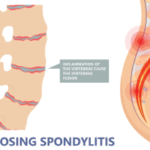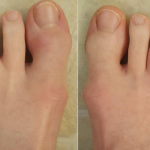
nukeaf / shutterstock.com
Psoriatic arthritis came to be viewed as a distinct disease entity with specific clinical features, genetics and pathophysiology only gradually. One important historic development in this transition was a 1973 paper written by a pair of researchers out of Leeds, England: John M. Moll, BSc, DM, and Verna Wright, MD, FRCP.1 Here we discuss the contributions of their paper and how it affected clinical judgments about the disease.
Early Studies in Psoriasis
In the 19th century, several French physicians wrote of the association of psoriasis with arthritis.2 This included the first detailed description of psoriatic arthritis written by Charles Bourdillon in 1888.3 But interest in the disease lagged for several decades. Through case studies and small series, the first half of the 20th century saw a building pile of evidence concerning the association between psoriasis and arthritis.2 The two were largely seen as separate diseases occurring coincidentally, although it was sometimes speculated that psoriasis might be one possible trigger of rheumatoid arthritis.1,4
“There had been recognition that there was this association between psoriasis and arthritis back in the 19th century,” says Christopher Ritchlin, MD, MPH, a professor of medicine and chief of immunology and rheumatology at University of Rochester Medical Center, N.Y., “but this concept didn’t seem to be high in people’s minds after the initial descriptions. Basically, psoriatic arthritis was considered a form of rheumatoid arthritis.”
This view began to slowly change with the work of several titans of rheumatology. Dr. Wright, Harvey Baker, MB, Walter Bauer, MD, and others began writing of the relationship between psoriasis and arthritis in more detail, including its epidemiological, clinical, serological and histological characteristics.1 Partly based on this work, the American Rheumatism Association (which later became the ACR) first included psoriatic arthritis in its classification of rheumatic diseases in 1964.5
Dr. Wright was a leader in the area, and he and his colleagues, working out of Leeds, performed much painstaking research on this topic. For several years, he worked closely with an associate, Dr. Moll. Together, the two published what came to be a critically influential paper, synthesizing and adding to our knowledge of the disease. Simply named “Psoriatic Arthritis,” the paper was published in Seminars in Arthritis & Rheumatism in 1973.1 Since then, the 24-page paper has been cited almost 1,700 times.
The Paper

Dr. Ritchlin
“It was this manuscript from the Leeds group that really showed that psoriatic arthritis was a distinct form of arthropathy,” says Dr. Ritchlin. He notes that Dr. Wright was an astute clinical observer who kept copious notes on his patients. “He drew conclusions from what he saw in the clinic. He used these observations to test hypotheses and design studies to carry out the kind of work that led to the seminal findings in this manuscript.”
Luis Espinoza, MD, chief of rheumatology and a professor of medicine at the LSU School of Medicine, New Orleans, agrees the 1973 Moll and Wright manuscript marked an important milestone. “It defined the characteristics and distinctiveness of psoriatic arthritis and provided the basis for considering it distinct from rheumatoid arthritis,” he says.
Dr. Ritchlin adds, “This manuscript went into detail as to why that was the case—in really specific detail.”
In their paper, Moll and Wright provided historical background, discussed terminology and definitions, and reviewed in great detail the existing evidence surrounding psoriatic arthritis. They reviewed epidemiologic, clinical, radiological, laboratory and pathological evidence for psoriatic arthritis as a distinct disease entity. The team also discussed diagnostic problems, genetic and other possible etiological factors, as well as treatment and prognosis.1
Notes Dr. Ritchlin, “There were people who were writing about this earlier, but no one had put everything together in the way this paper did.”
Definitions & Disease Subtypes


